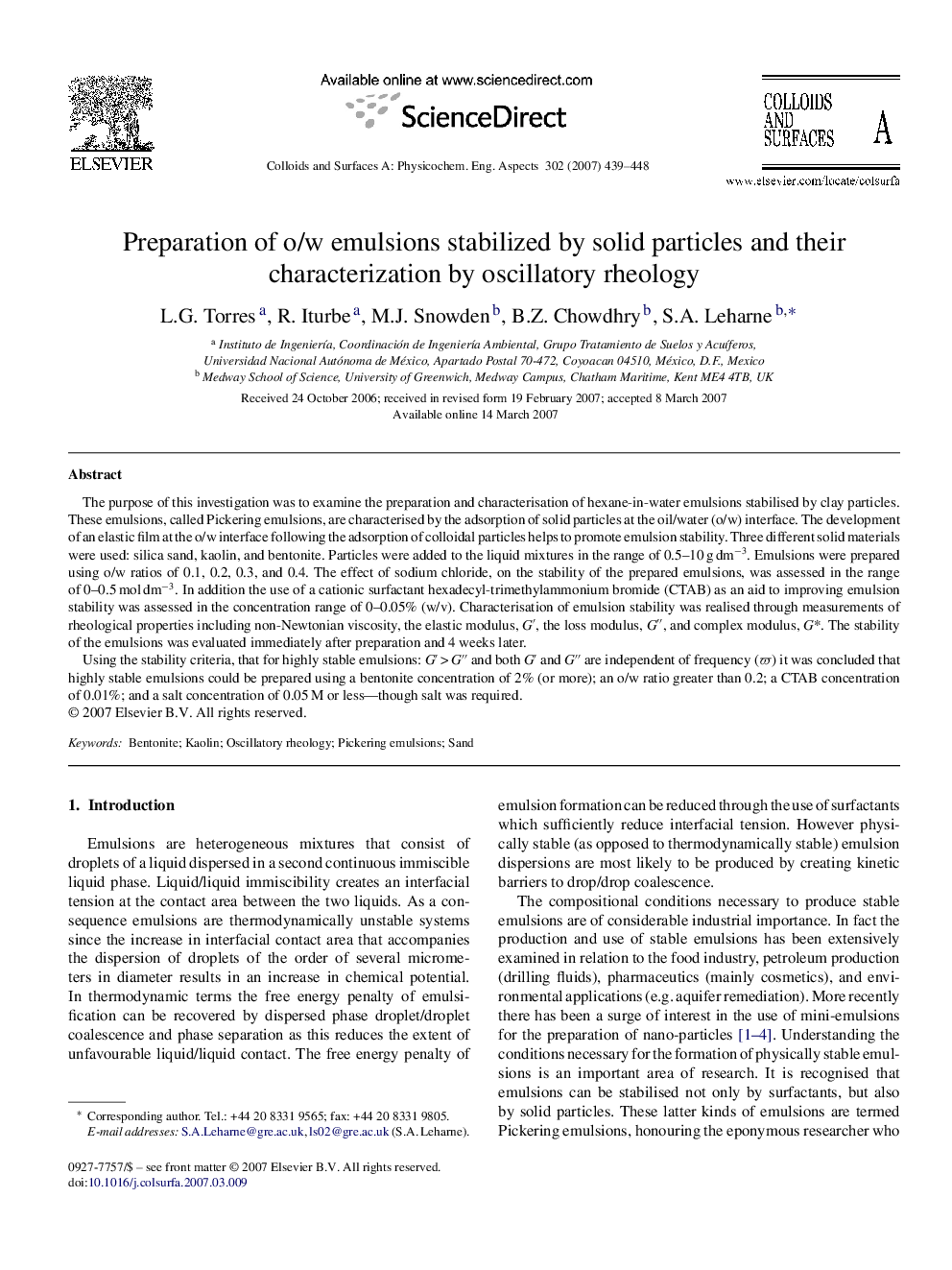| Article ID | Journal | Published Year | Pages | File Type |
|---|---|---|---|---|
| 597423 | Colloids and Surfaces A: Physicochemical and Engineering Aspects | 2007 | 10 Pages |
The purpose of this investigation was to examine the preparation and characterisation of hexane-in-water emulsions stabilised by clay particles. These emulsions, called Pickering emulsions, are characterised by the adsorption of solid particles at the oil/water (o/w) interface. The development of an elastic film at the o/w interface following the adsorption of colloidal particles helps to promote emulsion stability. Three different solid materials were used: silica sand, kaolin, and bentonite. Particles were added to the liquid mixtures in the range of 0.5–10 g dm−3. Emulsions were prepared using o/w ratios of 0.1, 0.2, 0.3, and 0.4. The effect of sodium chloride, on the stability of the prepared emulsions, was assessed in the range of 0–0.5 mol dm−3. In addition the use of a cationic surfactant hexadecyl-trimethylammonium bromide (CTAB) as an aid to improving emulsion stability was assessed in the concentration range of 0–0.05% (w/v). Characterisation of emulsion stability was realised through measurements of rheological properties including non-Newtonian viscosity, the elastic modulus, G′, the loss modulus, G″, and complex modulus, G*. The stability of the emulsions was evaluated immediately after preparation and 4 weeks later.Using the stability criteria, that for highly stable emulsions: G′ > G″ and both G′ and G″ are independent of frequency (ϖ) it was concluded that highly stable emulsions could be prepared using a bentonite concentration of 2% (or more); an o/w ratio greater than 0.2; a CTAB concentration of 0.01%; and a salt concentration of 0.05 M or less—though salt was required.
